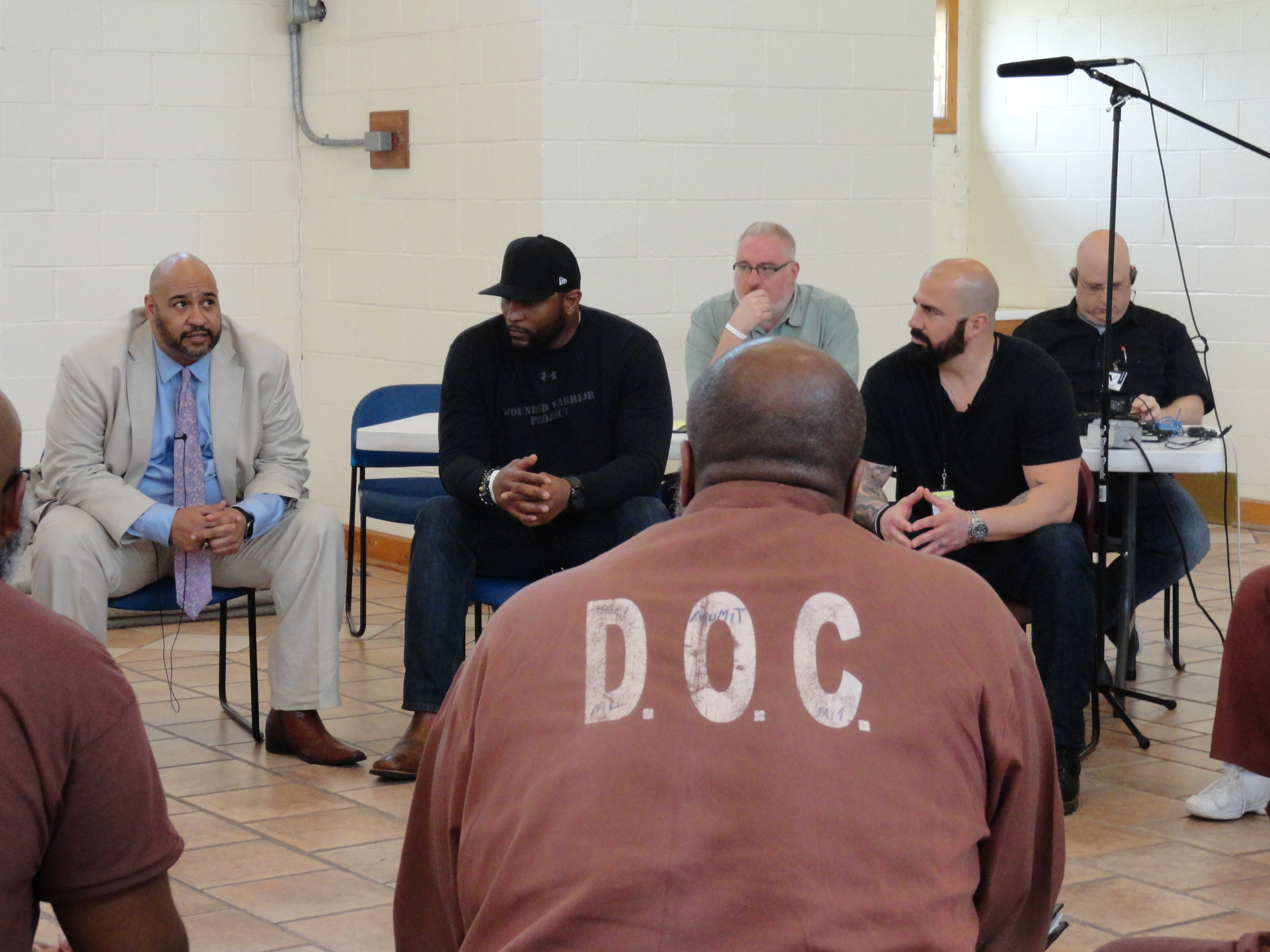Coming up next week, we have a special two part edition of Tackling Life that was recorded inside Pennsylvania’s Graterford Maximum Security Prison on April 27. Ray Lewis and I were joined by John Wetzel, the Secretary of the Pennsylvania prison system, to run a group with 15 remarkable inmates convicted to life sentences. You’ll hear powerful and moving stories of incarceration, and transformational stories of redemption. It’s a one-of-a-kind, exclusive, intimate look at life behind bars and what the inmates would say to their former selves. The episodes will drop on May 8 and May 15 respectively – I encourage you to subscribe now via your favorite podcasting service, so you don’t miss out!
In light of this upcoming episode, I also wanted to highlight the perspective I’ve gained while counseling inmates over the years, and how I’ve put it to use. Below, I’ve shared my TEDX talk, “Why I Chose to Go to Prison” and given you a breakdown of the theoretical perspective — Yield Theory — that I created in an attempt to help reduce recidivism among inmates.
Why I chose to go to prison | Christian Conte | TEDxPittsburghStatePrison
It is estimated that nearly 7 out of 10 people who leave prison will return to prison at some point. If that number seems alarmingly high to you, it’s because it is. The recidivism rates in our country are absolutely unacceptable. One thing is clear: to this point, prison has not been used as a place of rehabilitation, only punishment. “So what?” you say. “Who cares what happens to inmates? They’re criminals!”
Well, I care – and I think you should, too. When people get out of prison and commit new crimes, who do you think are the victims? It’s us!
It’s no secret that prison has historically just been a really long “time-out” for adults. Unfortunately, instead of just “sitting in a corner” until their time is up, prisoners often learn much more deviant behavior while incarcerated. All people, including you and me, lean on habits and behavioral patterns that we have established through repetition. When incarcerated individuals create and maintain negative behavioral habits for years in lock up, it only makes sense that they will continue those habits upon release.
I understand if you think that people who hurt others don’t deserve to be rehabilitated (I don’t agree with that, but I understand it). I can also understand if you have developed a negative attitude toward those who have been handed life sentences. But I struggle to understand the logic behind opposing rehabilitating people who are inevitably returning to the society in which we all live.
Something needs to be done about these alarming recidivism rates, and I believe the answer involves impacting the entire system of corrections. The two main players in the corrections environment are the inmates and the officers, and both players have plenty of room to improve. It’s not enough to simply say that inmates need to assume more responsibility for their behaviors and make better choices (they certainly do, but it’s not enough). It’s also not enough to simply say that corrections officers need to have more effective communication and conflict management skills (they certainly do, but again, it’s not enough). To really implement systemic and cultural changes, it’s important to address both inmates and officers, and that’s exactly what I decided to do.
The theoretical perspective that I created, Yield Theory, is predicated on genuinely meeting others where they are. So I knew that if I wanted to make a dent in recidivism, I would have to meet both inmates and officers where they are: In prison.
I chose to go to prison because I am not okay with recidivism rates being as high as they are, and I am not okay with sitting by doing nothing to address the problem – especially since I’ve been given the gift of developing the skills to do something about it.
I spent six months in a Restricted Housing Unit (the “hole”) studying the effect of Yield Theory on inmates who were classified as some of the most violent men in the state of Pennsylvania, as well as working with the officers whose daily routine it was to handle the care, custody, and control of those inmates. I shared what I learned in a TEDX talk entitled, “Why I Chose To Go To Prison.”
The bottom line: Recidivism impacts all of us, and if we really want to see changes made to the system, to ultimately see a safer society on the outside, we need to change our attitudes and focus on what needs to be done to make sure these people can lead productive lives upon their release.










